How to Grow Cantaloupe for Beginners
Today we are going to dive in deep on How to Grow Cantaloupe for Beginners. What you need to plant, grow, harvest, and watch for in your backyard garden.
Research what you can when learning gardening 101 so you can fill it and your kitchen with vibrant organic produce.
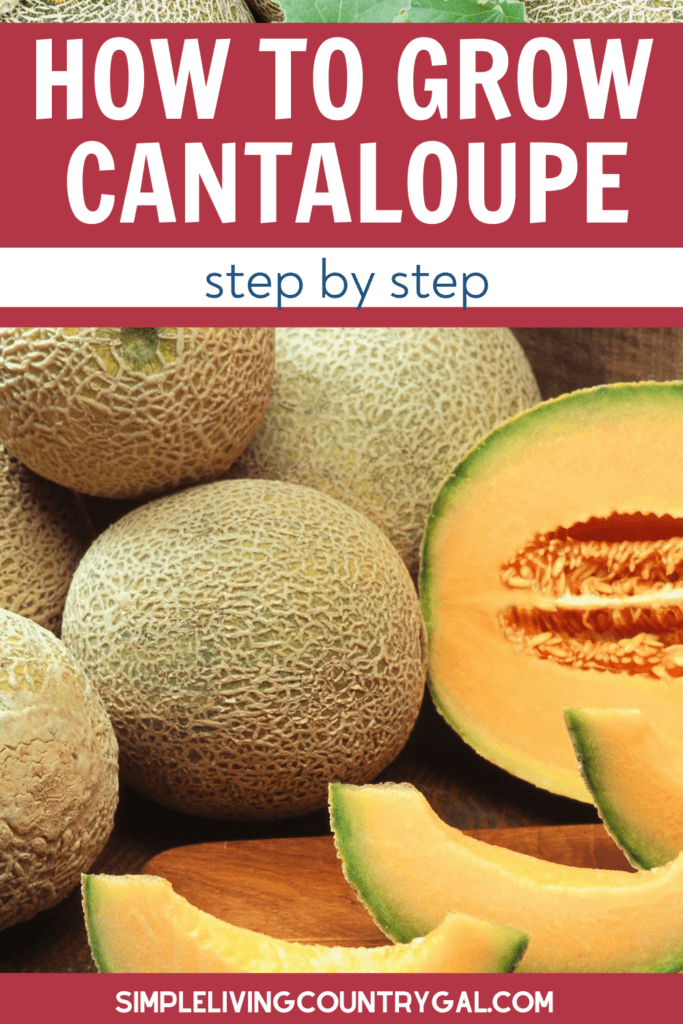
There is nothing quite like holding a homegrown cantaloupe in your hands. And compared to store-bought, well there is no comparison. Homegrown is juicier and sweeter. It looks better, it even smells better and it’s leaps and bounds over anything you could buy at your local grocery store.
The biggest reason for that is time. So much of it has passed by the time it’s reached your store, the delicious flavor it has when its first ripe has been lost. If you’re a fan of store-bought cantaloupe, you’ll definitely want to try growing your own and do your own comparison.
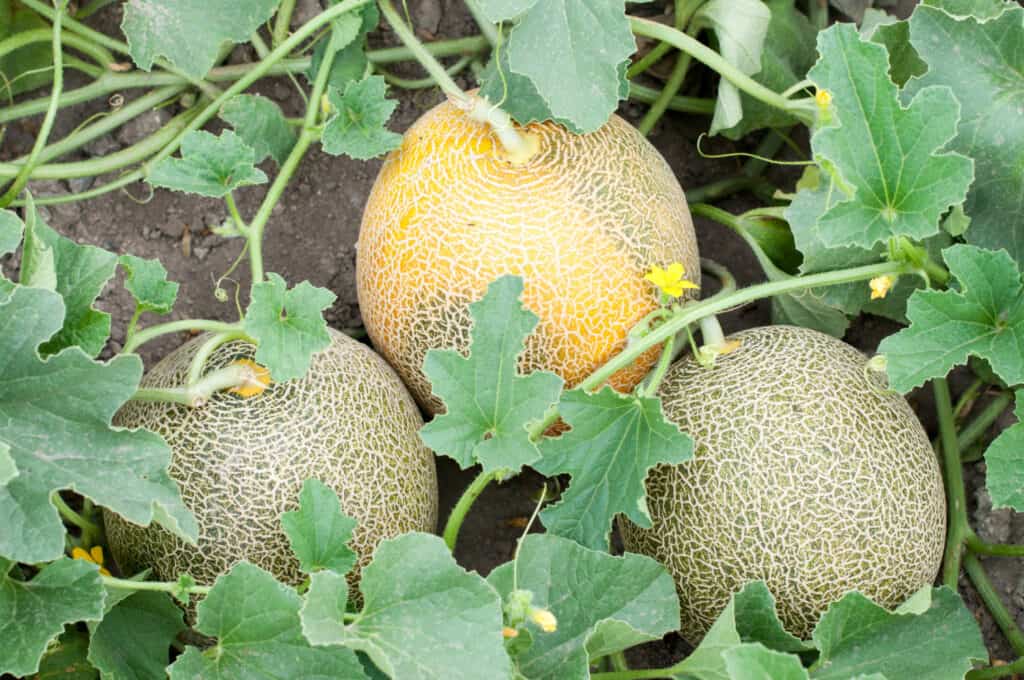
Surprisingly, the melon that is commonly referred to as “cantaloupe” in North America is not a true cantaloupe. Cantaloupes are more common in Europe. North American cantaloupes are more commonly a type of melon called a muskmelon. A true cantaloupe has a rough and warty rind and it’s not widely grown commercially in the US and Canada.
This delicious summer fruit is a great addition to your breakfast table, tossed in a smoothie, or even made into a homemade chilled soup. Yes, cantaloupe soup. If you haven’t tried it, you must.
If your family loves cantaloupe, you’ll want to make some room in your garden to plant your own to enjoy all summer long.
Within these various types of cantaloupe, there are several varieties to choose from.
- Hale’s Best Jumbo – Produces cantaloupes about 3 pounds in size and takes about 80-90 days to mature.
- Ambrosia – This is one of the sweetest varieties and also takes about 80-90 days to mature.
- Athena – This variety grows quickly, about 70-80 days, and produces large fruits that are 5-6 pounds in size.
- Bush Star – This is a good variety for gardeners with limited garden space. These take about 90 days to mature.
- Minnesota Midget – Perfectly suited for gardens in cooler regions, these sweet, flavorful melons are only about 1 pound and mature in 70-80 days.
- Hearts of Gold – A sweet, medium-sized melon that will mature in 80-90 days and grow to about 2 to 3 pounds.
- Honey Rock – These are larger, 3 to 4 pounds, melons with sweet fruit. They’ll mature in 75-90 days.
Give a few options a try this season and keep notes on what worked and what didn’t. A gardening journal is a great way to take notes so you can continually improve each growing season.
What You Need to Grow Cantaloupe for Beginners
The first thing you’ll need a perfect combination of sun, soil, and pollination to grow the best fruit. Sun and soil are easy if you plan right. Knowing your area is a great way to always be ready to add new items to your garden and expand when you are ready. The best way to do this is to track how much sun an area receives during the day. Keep this information in your garden journal so you can refer to it as needed.
Next up is soil. It is important to know the quality of your soil at the start of each growing season. This will better help you to make improvements before you put seeds or seedlings into the ground.
Pollination can be a little more difficult but planting flowers nearby to attract bees will help. You can easily add them to your garden or grow other fruits that flower.
When to Plant Cantaloupe
Cantaloupes are a warm-weather fruit, but they can easily be started indoors before the weather warms up giving you a bit of a head start. This is helpful if your growing season is shorter where you live.
In most cases, you can start seeds indoors in early to mid-March then transplant the seedlings in your garden in late April to early May. If your season is even shorter, plan on starting seeds indoors 4 to 6 weeks before the last frost of spring but don’t transplant until after the last frost and until the soil warms up to at least 60° and remains warm.
Again, keep a note of temperatures and frosts in your garden journal for better planning.
If you live in a warmer climate, you can wait until after the last frost when the soil warms up and sow seeds directly in the ground.
How to Plant Cantaloupe
When you’re ready to plant, choose a spot with well-draining soil, a mix between sand and loamy. Your target planting area should get full sun, the more the better, melons need all the light they can get for a better taste. As an added bonus, the afternoon sun will dry off the leaves. This will help to reduce the risk of fungal diseases that can come from wet foliage.
For the best drainage, keep your plants in small hills that are set up in raised rows. Plan on adding compost or aged manure to the soil before planting for much needed nutrients that will help develop healthy root systems. You can also cover the ground with black plastic and a layer of mulch to keep the soil warm and reduce weeds.
How Many Plants to Plant
Each vine will produce 2-3 melons so it depends on how much you enjoy cantaloupe, but usually, 2-3 plants per person are plenty. Since cantaloupes are a vining plant they will require quite a bit of space. This is something you will want to keep in mind when planting.
How Long Does Cantaloupe Take to Grow?
There are a few factors that determine how long it takes cantaloupe to mature like the variety you plant, the nutrients in the soil, and how much sun the plants get throughout each day. Also, how much the plants are being pollinated is a factor as well. But, on average, cantaloupes are ready to harvest between 35 and 45 days after pollination, adding on a few more days for some varieties.
Temperature
Cantaloupes are a warm-weather fruit so your soil should reach at least 60° and remain at that temperature or warmer. Temperatures any lower will slow the growth. Optimal temperatures are between 85° and 95° for quick growth. Keep in mind that cantaloupes can withstand temperatures of up to 104°.
Sun
As I mentioned above, cantaloupes need a lot of sun to mature and ripen for the best taste. To ensure this, plant in an area with full sun, about 8 to 10 hours per day.
Soil
Raised beds work well for cantaloupe. If planting in the soil, make sure to hill the plants, this will help with drainage. The soil should be loose so break up any clods in the ground before planting. Do a soil test to check for nutrients and pH levels; you’ll want a mildly acidic soil between 6.0 and 6.5 pH.
You can test the soil quite simply with this affordable soil test. You may need to amend the soil with a liquid fertilizer, compost, or organic manure to improve the soil before planting.
Water
Watering is important for healthy growth, the plants will need about 1 to 2 inches per square foot of water per week, about 1.5 gallons. You can use a drip irrigation, if possible, to keep the plants consistently moist and evenly watered.
For best results, reduce watering once the fruit has started to grow. Hot, dry weather encourages the sweetest fruits. Too much watering can cause bland fruit so adjust the watering schedule accordingly if you receive a significant amount of rain.
Fertilizing
Be sure to check the soil’s pH level and adjust it accordingly before planting for good fertilization. The soil can be fertilized again after the blossoms start to appear, but you’ll want to use a fertilizer with a lower amount of nitrogen than phosphate and potassium. If you use a granular fertilizer, choose one that is a 5-10-10 or 2-12-12. Potassium and phosphate will help your plants develop delicious fruits.
Spacing
Hilled rows should be about 3 feet apart with seeds planted about every 18 inches to prevent overcrowding of the fruits. If space is
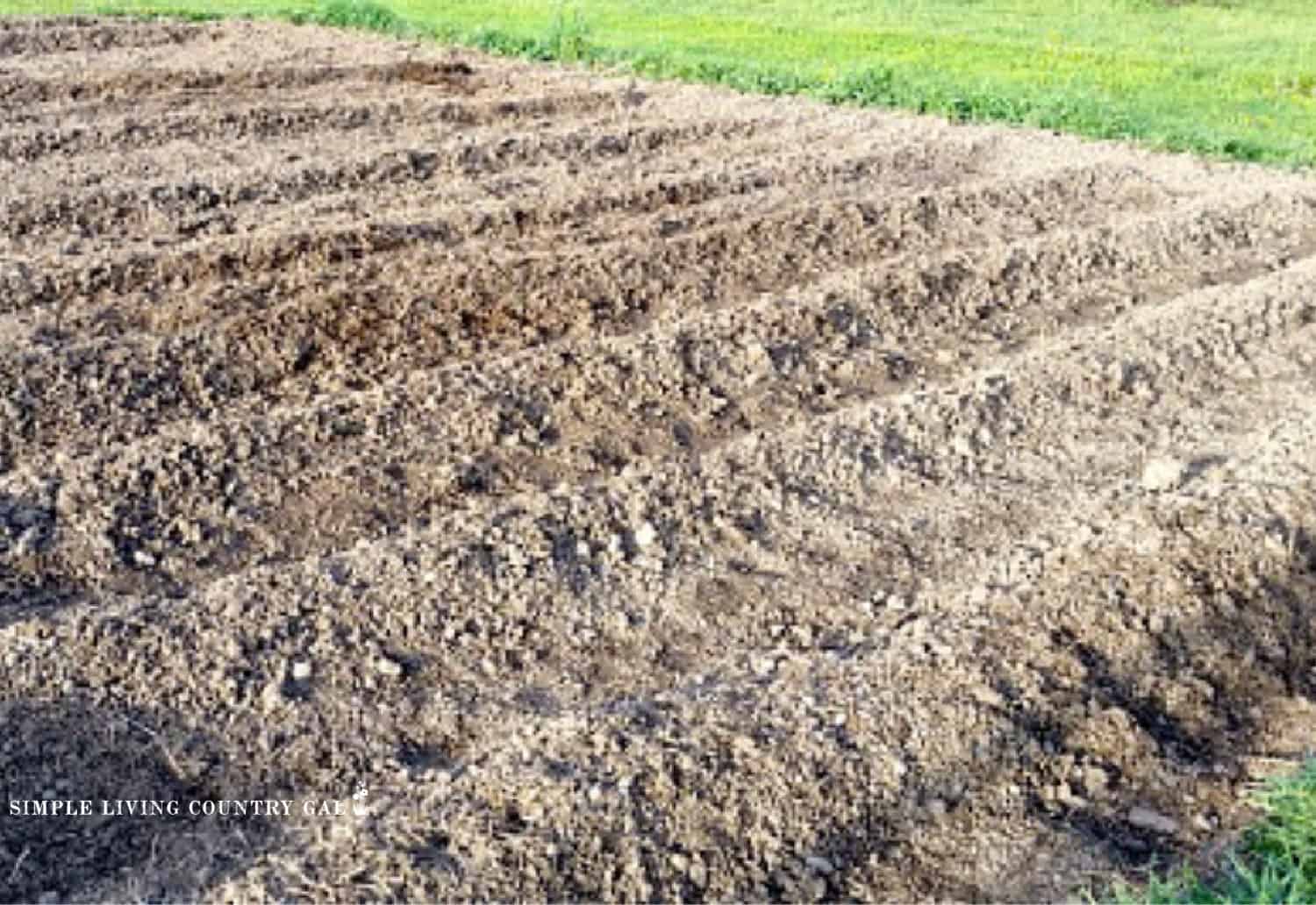
limited, the vines can be trained to grow up a support like a trellis. Just make sure it can bear the weight of the fruit.
Depth
Cantaloupe seeds do not need to be planted deep, about 1 inch deep is sufficient for proper growth. You can use your finger to make a hole in the soil and drop a seed in. Cover lightly with a layer and water to encourage growth.
Growing Tips for Cantaloupe
• Starting seeds indoors 4 to 6 weeks before the last frost will give you a head start on the growing season.
• Cantaloupe vines are fragile and tender, it’s important not to transplant until after the last frost and soil have warmed to at least 60°.
• If the soil test indicates that nutrients need to be added, fertilize with a liquid fertilizer when vines start to grow. Later, avoid nitrogen-heavy fertilizers as they’ll produce more foliage and less fruit.
• Row covers will help to reduce pests. Just remember to remove them to encourage pollination from bees.
• When watering, try to avoid wetting the leaves as this encourages fungal growth.
• Mulching around the plants will help the soil retain more moisture.
• Reduce watering once fruits start to develop. This will help produce sweeter fruits.
• Once the fruit begins to grow, prune the end buds off the vines. They’ll produce fewer melons, but they’ll be larger and better quality.
• Vines produce both male and female flowers on the same plant and male flowers usually begin to show a few weeks before the females. Don’t be concerned if the first fruits don’t produce fruit.
• Remember to encourage bees to your garden for pollination. You can do this by planting other flowers around or in your garden.
• If the cantaloupes have a bland taste, this is probably due to a lack of magnesium in the soil. Increase the magnesium with a solution of 6 tablespoons Epsom salts and 3 Tablespoons of borax mixed with 5 gallons of water and spray it on the foliage when the vines begin to “run” then again when the fruit is about 2 inches in diameter.
• If you’re short on garden space, you can train the vines to grow upwards on a trellis. Just make sure the trellis can support the weight of the melons. A tomato cage will also work well.
You can support the weight of the melons with netted produce bags, just make sure it’s a breathable bag, you don’t want to melons to rot. Just place the net around the melon and attach it to the trellis or frame like a sling.
How to Harvest Cantaloupe
When the rinds begin to change from green to yellow or tan, the melon is ready to be harvested. Be careful not to pick too early or you won’t enjoy the best flavor. Look for a crack in the stem where it’s attached to the fruit, this is another sign of ripeness. The fruit should easily separate from the vine, but not fall off on their own; this typically means it’s overripe.
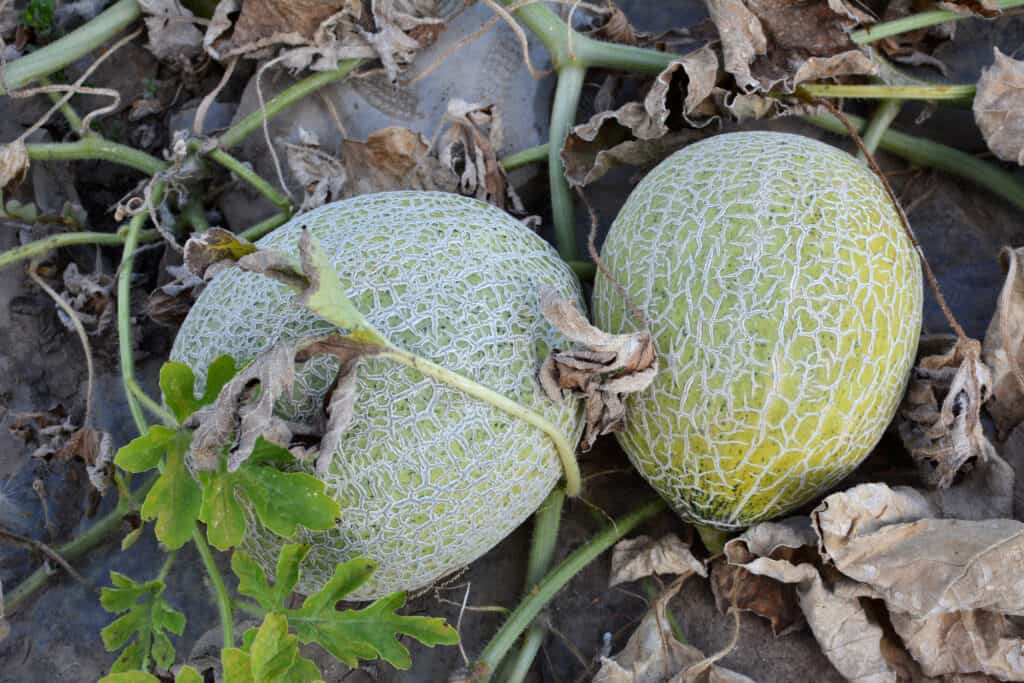
Harvest the melons when the vines are dry but be careful not to damage them or it could have a negative impact on the remaining fruits on the vine. Gently cut the melons from the vine, don’t pull them or it will damage the vine.
Melons will continue to soften after harvesting but they won’t continue to sweeten once cut from the vine.
How to Store Cantaloupe
Cantaloupe is best enjoyed fresh. It can be stored uncut for 5 or 6 days. Once you cut it open, it will last in the fridge for up to 3 days when wrapped tightly in plastic.
What Diseases and Pests to Watch For
There are a few things to watch for when growing cantaloupe such as rabbits, deer and smaller pests. You will also want to be aware of the following diseases:
· Aphids – These are very common garden pests attracting to any kind of leafy plant. They are small but easily visible on the leaves under close inspection. They’ll suck the sap from the leaves, leaving them yellow or brown, stopping any growth. If it’s just a few, you can spray them off the plants. If it’s a bigger infestation, you’ll need neem oil or insecticidal soap. You can also encourage ladybugs and they enjoy feasting on aphids.
· Cucumber Beetles – These bright-colored beetles will damage both the leaves and the vines. They’ll also contribute to rot and nibble on the fruit, leaving scars. Neem oil, used early before they spread, will get rid of them.
· Cutworms – These plump little brown worms can kill the seedlings and eat holes through the melons. They’re most active at night, curling up and hiding in the soil at the base of the plant during the day. To control them, inspect your garden at night to find them and hand-pick them off. You can also spread diatomaceous earth around the base of the plant or spray the infected areas with neem oil or insecticidal soap.
· Squash Bug – These bugs feed on the leaves, turning them speckled and brown. The vines will wilt and possibly die off. Diatomaceous earth will help to kill them off or at least slow the spread.
· Alternaria Leaf Blight – This is a fungal infection caused by too much heat, humidity, or rain. It starts as small, yellowish-brown spots on existing leaves and spreads to any new growth. It can also cause the melon to crack. Avoid overhead watering and try using a rainproof tarp if wet conditions last more than a couple of days.
· Downy Mildew – This is a fungal disease that causes brown spots to appear on the leaves and eventually killing them. Avoiding overhead watering will reduce the risk. You can also use a fungicide when needed.
• Rabbits – If rabbits get into your garden you may want to put up a small fence to deter them as well.
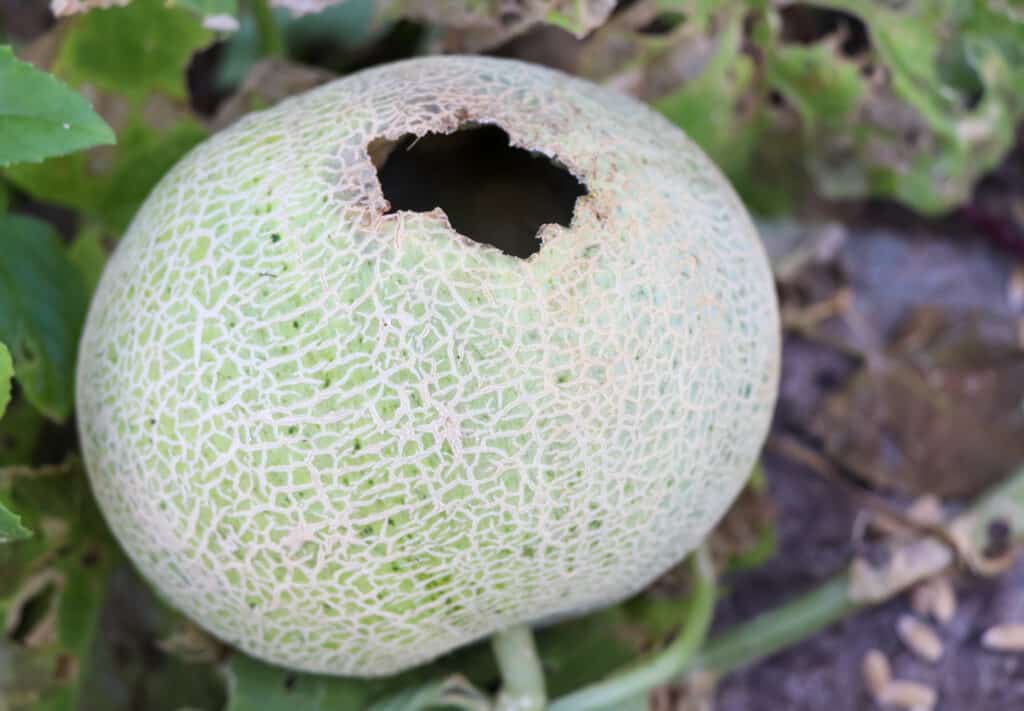
Cantaloupes grown on a fence or trellis are less susceptible to diseases and pests so it’s something to consider when planting. My best tip is to encourage you to look at your plants, all of them, as you water.
This is your time to give everything a good look over. Watch for any leaves that look wilted or have out of the ordinary spots or discoloration. Check the fruit and the quality of it as it is growing. The sooner you identify an issue the more quickly you can correct it before it gets out of hand.
If you love cantaloupe, you’ll love them, even more, when you grow them yourself and enjoy them right off the vine. Cantaloupes are easy to grow and can be a great addition to any backyard garden. I hope this guide on how to grow cantaloupe for beginners was the help you needed to get started.
